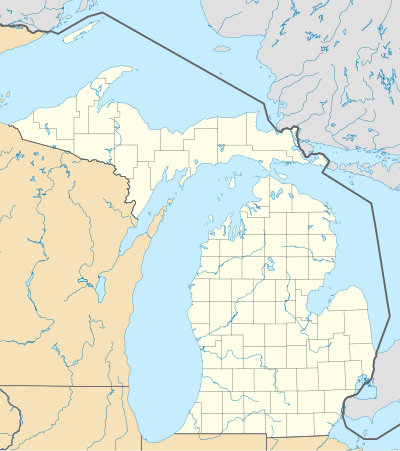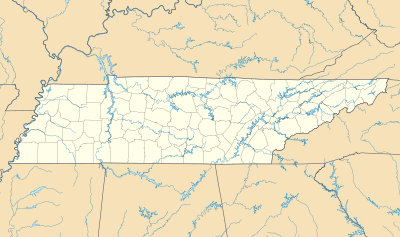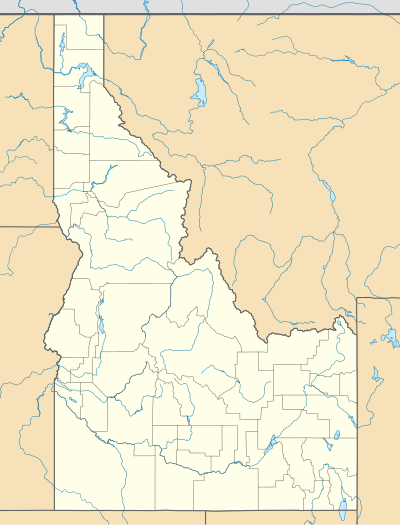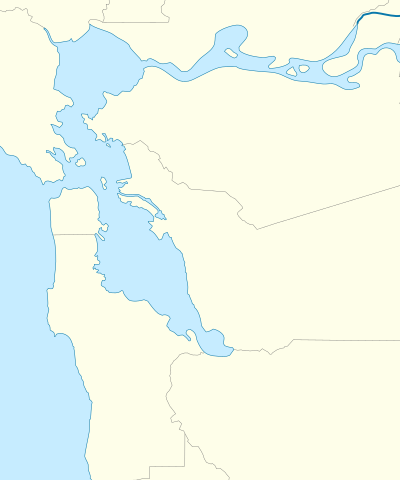1984 Summer Olympics torch relay
 From Wikipedia the free encyclopedia
From Wikipedia the free encyclopedia
 | |
| Host city | Los Angeles, United States |
|---|---|
| Countries visited | Greece, United States |
| Distance | 9,375 miles (15,088 km) |
| Torch bearers | 3,636 |
| Start date | May 8, 1984 |
| End date | July 28, 1984 |
| Torch designer | Newhart, Turner Industries |
| No. of torches | 4,500 |
| Part of a series on |
| 1984 Summer Olympics |
|---|
|
The 1984 Summer Olympics torch relay was run from May 8 until July 28, prior to the 1984 Summer Olympics in Los Angeles. It was commonly referred to as the AT&T Olympic Torch Relay, reflecting the lead sponsor of the event. The relay crossed the United States from New York City to Los Angeles, with 3,636 torchbearers running with the torch along a 9,375-mile (15,088 km) route. It was by far the longest Olympic torch relay that had been organized up to that point, creating the precedent for the Olympic flame to tour all parts of the host country rather than traveling directly to the opening ceremony.
It was the first torch relay to be funded primarily by corporate sponsorships, a decision which received significant backlash from Greek organizers, who threatened not to light the flame until days before the relay began. It was also the first time that ordinary members of the public, rather than carefully selected teams of runners, were permitted to carry the Olympic torch. Through the "Youth Legacy Kilometer" program, any person or group which donated $3,000 to selected charities would be permitted to run with the torch for 1 kilometer (0.62 mi). The program raised nearly $11 million for the YMCA of the USA, the Boys Club of America, the Girls Club of America, and the Special Olympics.
The relay culminated in the Olympics' opening ceremony on July 28. Rafer Johnson was the final torchbearer who lit the cauldron, becoming the first Black athlete in history to do so.
Torch[edit]

The aluminum torch, designed with a brass finish and leather handle that gave it an antique look, was 56.5 centimeters (22.2 in) long and weighed 1,000 grams (35 oz).[1] Etched on the ring of the torch were the words of the Olympic motto ("Citius, Altius, Fortius") with the Olympic rings between each word. They were manufactured by Turner Industries of Sycamore, Illinois,[2] and each one was numbered.[3] After the trial run in March, the original design of the torch was found to be flawed. The valve was found to be recessed too deeply inside the bowl of the torch and was extinguished too easily. The type of propane and the valve used for its release were also adjusted to ensure that it would remain lit wherever possible.[3]
Organization[edit]
Planning for the relay began in 1981, when the idea of the Youth Legacy Kilometer program was first conceived. Under this program, individuals and organizations could sponsor a kilometer of the relay, which would give them the right to carry the torch along that segment of the route or to choose others who would be allowed to do so. The cost to sponsor a kilometer was $3,000, the proceeds of which would be donated to charity.[3] Peter Ueberroth, chair of the Los Angeles Olympic Organizing Committee (LAOOC), later wrote that he first conceived of the idea of running the torch across the length of the country, which had not been done before. Although his fellow organizers were extremely skeptical that such a relay would be practical, Ueberroth continued to push for it and eventually succeeded.[4]: 188–191
Shortly after AT&T became a sponsor of the Olympic Games in 1982, organizers tasked the company's Long Lines Division with handling the logistics of the relay event.[3] AT&T employees would also be responsible for carrying the flame in areas where a sponsor had not been found.[5] AT&T's role in the relay coincided with the company being forced to divest its regional operating companies at the beginning of 1984; the Long Lines Division was not affected by the divestiture. The Boys Club of America, the Girls Club of America, and the YMCA of the USA shared responsibility for marketing the event and for disbursing the funds raised as part of the relay.[3] Additional sponsors included Burson-Marsteller, the PR agency of AT&T, which helped to organize the relay provided the majority of the staffing for the events;[3][6] Levi Strauss & Co., which provided the runner uniforms; Converse, which supplied the shoes; and General Motors, which designed custom GMC and Buick vehicles to follow and support the runners, specially designed to travel at slow speeds for long periods of time.[7][3]
At the 86th IOC Session in New Delhi, India in March 1983, the LAOOC presented its plans for the relay. Under the LAOOC's initial proposal, the relay would have started in early April and lasted for nearly four months, more than twice the length of any previous Olympic torch relay. The Hellenic Olympic Committee (HOC), responsible for lighting the flame in Olympia, conveying it to Athens, and handing it over to the host nation, opposed the plan, believing that the sponsorships were commercializing the symbol of the Olympic flame. Furthermore, the HOC refused to stage its portion of the torch relay so early, since the torch had traditionally been carried through Greece by children who would still be in school in April.[8][9] As a result, the relay was scaled back to last less than three months, but the dispute over the sponsorship program remained unresolved.[4]: 191–193
Plans for the relay and a preliminary route were first publicly announced on July 28, 1983, one year before the Games' opening ceremony, in two simultaneous press conferences in New York City and Los Angeles. The proposed route would have begun on May 8, 1984 in New York, then passed through all 50 states (Alaska and Hawaii being visited only by branch routes which would split off from the main torch in Seattle) before arriving in Los Angeles for the opening ceremony.[5]
However, given the later start date, organizers realized that this route, covering over 16,000 miles (26,000 km), would require runners to carry the torch 24 hours a day and would be logistically impractical.[3] Additionally, the Youth Legacy Kilometer program had fallen below expectations, with only 2,000 of the available 10,000 kilometers sponsored by the end of 1983.[10] Political consultant Wally McGuire was tasked with designing a more realistic route, which was shortened to 9,375 miles (15,088 km) through 33 states and the District of Columbia. McGuire presented his proposal to the LAOOC on January 3, 1984,[4]: 194–196 and details about the new route were made public the next day.[10] Two advance teams, one starting from New York and one starting from Los Angeles, surveyed and finalized the route, meeting in Steamboat Springs, Colorado on February 15.[3]

On February 1, Kimon Koulouris, the Greek minister of sports, announced that the government would not allow the flame to be used for commercial purposes, jeopardizing the relay plans. The mayor of Olympia, Spyros Foteinos, added that the town also would not agree to participate in the event if it was commercialized,[11] saying that the American delegation would have to light the flame themselves. During IOC meetings at the Winter Olympics which began a few days later in Sarajevo, this opposition continued.[4]: 204–207 [12] In response, the LAOOC agreed to stop accepting new sponsorships on March 20, and the Greek delegation tentatively agreed to participate in the relay.[13] In order to keep Greek participation in the relay to a minimum, and to avoid the possibility of protests along the route there, organizers considered transmitting the flame to New York in the form of a laser beam by satellite, as had been done in 1976 between Athens and Montreal.[3]
LAOOC general manager Harry Usher insisted that "we have not commercialized the torch run" and that "the object is to carry the torch with the same dignity it has always had in Olympic tradition." This reputation was further damaged, however, after the Caesars Tahoe Palace casino resort sponsored 50 kilometers of the Nevada route and announced that it would raffle them off to customers, who would win a place in the relay, a two-night stay at the resort, and a cash prize of $1,984. The LAOOC forced Caesars to scale back its promotion.[14] Ultimately, seven of the kilometer segments were given to winning customers, 42 went to local organizations, and the remaining kilometer was given to 1976 decathlon winner Bruce Jenner (now known as Caitlyn Jenner), who had signed a promotional contract with Caesars.[15]
A test run for the relay was held from March 18 through March 24, from Trenton, New Jersey to Cleveland, Ohio, following the same route on the same days of the week as the relay. Based on this experience, the design of the torch was modified to ensure that the flame would not go out during the run, and other logistical changes were made.[3]
Despite the compromise that had been worked out between Greek and American officials, on April 25, eight days before the planned lighting ceremony at Olympia, the Hellenic Athletics Federation told its members not to participate in the relay to Athens in protest against the commercialization of the Olympics. The next day, the Olympia ceremony was abruptly canceled.[3] According to Peter Ueberroth's memoirs, IOC president Juan Antonio Samaranch, who had assured the LAOOC throughout the dispute that the flame would be handed over without problems, dispatched two students to Olympia, where they lit their own Olympic flame and brought it back to IOC headquarters in Lausanne, Switzerland. With their leverage over the flame removed, Ueberroth wrote, the Greek organizers agreed to hold an official lighting ceremony.[4]: 240–242 Reportedly, American organizers also threatened not to allow Greek athletes to walk in the Parade of Nations first at the opening ceremony, as is traditional.[16]: 36
Relay and notable torchbearers[edit]

The flame was lit in a private ceremony at Olympia on May 7, with spectators not permitted as was usual. It was then flown by helicopter to Athens, and carried on a jet airliner owned by the U.S. federal government to New York.[3] The flame was brought to the United Nations Plaza on the morning of May 8, where a cauldron was lit by Rafer Johnson. The first kilometer was run by Bill Thorpe Jr., grandson of Jim Thorpe, and Gina Hemphill, granddaughter of Jesse Owens. The second kilometer was run by Abel Kiviat, the oldest living American to have competed in the Olympics at the age of 91. Two hours after the relay began, the Soviet Union announced it would boycott the Olympics.[4]: 243–272 [17][18] Olympic boxer Mark Breland also carried the torch in Manhattan.[19]
Unlike later Olympic torch relays, the 1984 event was run entirely on foot, with no other means of transportation used after the flame landed in New York. In areas where no people or organizations had signed up for the Youth Legacy Kilometer program, the torch was carried by a series of "cadre" runners who were members of the Telephone Pioneers of America, a non-profit organization consisting of current and former AT&T employees. At all times, the torch runners were accompanied by a caravan of support vehicles, custom-designed for the relay by sponsor General Motors. The torch was run for roughly 14 to 20 hours per day at a pace of roughly seven miles per hour.[3]

From New York, the relay first traveled northeast to Boston, then backtracked across Connecticut, New York, and New Jersey to reach Philadelphia. Olympic basketball gold medalist and U.S. senator Bill Bradley ran a kilometer in Trenton, New Jersey.[20] Paralyzed news reporter Chris O'Donoghue carried the torch in his wheelchair in Baltimore.[21] In Washington, D.C., the torch was brought to the White House, where it was greeted by President Ronald Reagan.[22]
West of Washington, the relay traversed the Appalachian Mountains in West Virginia on its way to Pittsburgh. The flame visited Cleveland and Detroit in late May. The route briefly looped through Chicago, where it was carried by Olympic athlete Willye White and Chicago Bears star running back Walter Payton, before returning eastward into Indiana on its way to Indianapolis.[23] The run through Indianapolis on May 26 took place in the midst of Memorial Day weekend festivities leading up to the 1984 Indianapolis 500, which was held the following day. Gary Romesser, who had won the 500 Festival Mini-Marathon the previous day, carried the torch at the head of the 500 Festival Parade.[24][25][26]
Muhammad Ali ran with the torch in his hometown of Louisville, Kentucky,[27] while another Olympic gold medalist from the state, Tamara McKinney, started the next day's leg in Lexington.[28] The First Lady of Tennessee, Leslee "Honey" Alexander, wife of Governor Lamar Alexander, carried the torch onto the University of Tennessee campus in Knoxville.[29]
From Knoxville, the torch traveled south through the Great Smoky Mountains to Atlanta, then followed U.S. Route 78 west to Memphis, Tennessee. Olympic hurdler Thomas Hill ran with the torch in Blytheville, Arkansas,[30] as it skirted the bank of the Mississippi River up to St. Louis. Wilma Rudolph carried it under the Gateway Arch, handing it to St. Louis Cardinals star player Ozzie Smith.[31] Missouri governor Kit Bond held the torch at the state capitol in Jefferson City,[32] while Kansas City saw the relay's oldest torchbearer, 99-year-old Ansel Stubbs, pass the flame to its youngest, 4-year-old Katie Johnston.[33]
The relay crossed the eastern part of Kansas southward to Oklahoma. In Oklahoma City, governor George Nigh was joined by Jim Thorpe's son Richard Thorpe for a ceremony at the state capitol.[34] Rafer Johnson carried the torch again in Dallas, Texas, passing it onward to Dallas Cowboys player Bob Hayes (the only athlete with both an Olympic gold medal and a Super Bowl ring).[35] In nearby Azle, a runner was burned by the torch and required medical attention.[36] The border between Farwell, Texas and Texico, New Mexico was officially designated as the halfway point of the cross-country route, as it was reached on June 17, the 41st day of the 82-day relay.[37]
After passing through Albuquerque, the torch was taken northward into Colorado. Hank Kashiwa carried the torch into Denver. Governor Richard Lamm received the flame on the mile-high step of the Colorado State Capitol and ran with it for a kilometer before passing it to Denver mayor Federico Peña, who carried it down the 16th Street Mall – both politicians dressed in the official runner's uniform.[38] The torch was then carried through the Rocky Mountains, crossing the Continental Divide at Berthoud Pass.[39] Henry Marsh and mayor Ted Wilson ran with the torch in Salt Lake City, Utah.[40] Christin Cooper was the grand marshal of a torch parade in Twin Falls, Idaho.[41]
The torch crossed northeastern Oregon and much of Washington state before reaching the Pacific coast at Seattle, where it was carried by Hugh Foley. Johnny Bumphus ran with it in nearby Tacoma.[7] Proceeding southward to Portland, the torch followed the Willamette Valley to Eugene, then crossed the Cascade Mountains to Klamath Falls. On July 11, the flame was brought into the host state of California at Hatfield, near Tulelake.[42][43]
Eagle Lake Road in Lassen County, California, reportedly the only county-maintained road used in the California leg of the relay as opposed to state and federal highways and city streets,[44] was renamed Route of the Olympic Torch, a name it still bears today. The torch briefly left California to pass through Reno, Nevada, where a local resident was killed in a vehicular accident when traffic was halted for the relay, as well as the state capital of Carson City.[45] The segment sponsored by Caesars Tahoe brought the torch back into California the next day, with Jenner carrying the torch along the casino row in Stateline, Nevada on its way to South Lake Tahoe.[46]
Nancy Ditz carried the torch across the Golden Gate Bridge into San Francisco. The arrival of the torch on July 16 coincided with the opening of the 1984 Democratic National Convention, which also took place in San Francisco that same day.[47] The Democratic candidates nominated at the convention, Walter Mondale and Geraldine Ferraro, had watched the torch pass by while staying in South Lake Tahoe a few days earlier.[48] Mayor Lionel Wilson carried the torch through Oakland,[49] while Congressman Ed Zschau brought it onto the Stanford University campus.[50]

George Christie, a prominent member of the Hells Angels Motorcycle Club, carried the torch in his hometown of Ventura.[51] O.J. Simpson carried the torch up the California Incline into Santa Monica, bringing it into the Los Angeles area.[52] One of the only cities to be added to the relay route after it was initially announced, while many were removed due to logistical constraints and a lack of donations, was San Diego, where local residents raised over $550,000 for the Youth Legacy Kilometer program.[53] The San Diego leg of the relay, in which the torch was carried by mayor Roger Hedgecock and Padres star Steve Garvey, was described as raising the city's spirits after the murder of 20 people in the San Ysidro McDonald's massacre a few days earlier.[54] In order to get permission to run the torch across Marine Corps Base Camp Pendleton, organizers allowed a platoon of Marines to carry it there.[55]
The relay culminated on July 28, with the Olympics opening ceremony at Los Angeles Memorial Coliseum. Gina Hemphill, who had been one of the first torchbearers in New York, carried the torch into the stadium and circled the track before delivering it to Rafer Johnson, who lit the cauldron.[3]
The torchbearers, 3,636 in all, came from a wide variety of backgrounds. The 1984 relay was the first to invite nominations from the public, a system replicated in future relays.[56] It was also the first to charge torchbearers for their participation. Anybody who could raise the entry fee would be able to sponsor one kilometer and bear a torch themselves or designate a person to do so. The Youth Legacy Kilometer program raised nearly $11 million – a fraction of the $30 million organizers had hoped to raise[4]: 193 – all of which was given to charities.[3][6] The YMCA received the largest proportion of the funds, amounting to around $3.9 million, while smaller amounts went to the Boys Clubs, Girls Clubs, and the Special Olympics.[3]
In parallel with the torch relay, a group of Native American athletes held "The Longest Run", starting at the Onondaga Reservation near Syracuse, New York on May 28, 1984 and culminating on July 19 at Whittier Narrows Recreation Area near Los Angeles, for the opening of the Jim Thorpe Memorial Pow-Wow and Native Games there. The event honored Thorpe, whose 1912 Olympic medals, stripped due to his time spent as a professional athlete, had officially been reinstated in January 1983. It was also patterned after the American Indian Movement's Longest Walk protest march of 1978.[57]






















